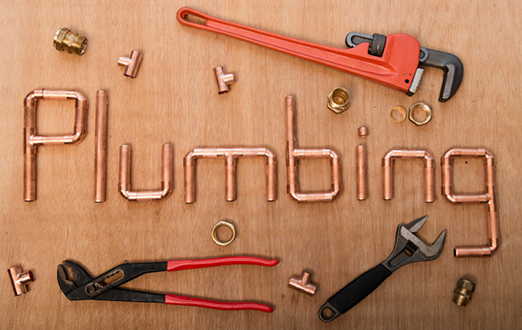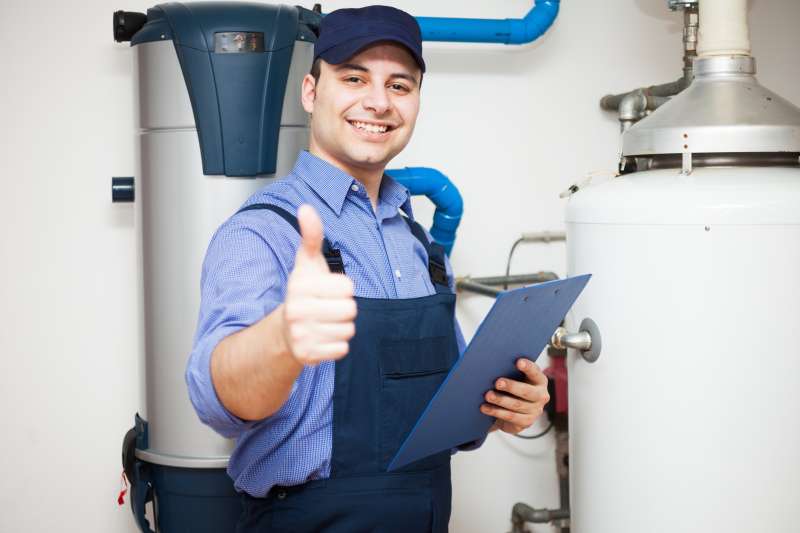Recognizing and Using a P-Trap in Pipes
When it pertains to pipes, the P-trap plays an essential duty in keeping a healthy environment in your home. Its straightforward layout and function may appear uncomplicated, yet there are nuances and details that can impact its effectiveness. Recognizing exactly how to properly install, preserve, and repair P-traps can save you from prospective migraines down the line. So, let's discover the complexities of the P-trap and just how grasping its usage can make a substantial difference in your pipes system's performance and total wellness.
Secret Takeaways

- P-Traps trap water to avoid sewage system gases.
- Use PVC, ABS, or metal for P-Traps.
- Normal upkeep makes certain correct feature.
- P-Traps prevent nasty smells in plumbing.
- Appropriate setup and cleaning are essential.

Significance of P-Traps in Pipes
Understanding the value of P-Traps in plumbing is essential for keeping proper drain and stopping dangerous sewage system gases from entering your home. When it comes to P-Trap installment, using the proper products is essential for ensuring the effectiveness of this important pipes component. P-Traps are generally made from materials such as PVC, ABDOMINAL MUSCLE, or steel, with PVC being an usual choice as a result of its resilience and resistance to corrosion. Appropriate installment of the P-Trap includes attaching it securely to the water drainage pipeline from your sink, shower, or tub, producing a water seal that protects against drain gases from backing up right into your space.
Picking the right products for your P-Trap installment is vital to its capability and durability. PVC P-Traps are light-weight and simple to work with, making them perfect for DIY jobs. However, steel P-Traps might be liked for their sturdiness in high-temperature atmospheres. Whichever material you select, guaranteeing a limited seal and appropriate placement during installment is important for avoiding leaks and keeping a healthy and balanced plumbing system in your house.
How P-Traps Work
Let's talk about exactly how P-Traps work in your plumbing system. P-Traps feature by capturing water to develop a seal that protects against sewer gases from entering your home. Understanding this system is vital for maintaining a healthy and odorless atmosphere in your residence.
P-Trap Feature
The P-trap plays a substantial role in avoiding drain gas from entering your home by producing a water seal. When it concerns P-trap installment, ensure it's properly placed under your sink or fixture. This U-shaped pipe traps a percentage of water, which works as an obstacle, obstructing nasty smells and harmful gases from traveling back up through the drain. P-traps can be made from numerous materials like PVC, ABDOMINAL MUSCLE, or steel, and be available in various sizes to fit different pipes setups. The benefits of a P-trap prolong beyond odor avoidance; they likewise trap particles, avoiding blockages even more down the line. Bear in mind, preserving your P-trap is essential for its appropriate function. Frequently look for leakages, clean any kind of trapped particles, and verify the water seal stays undamaged. By understanding exactly how your P-trap works and its relevance in your plumbing system, you can keep your home smelling fresh and your drains pipes streaming efficiently.
Water Seal Significance
To recognize the significance of the water obstacle in a P-trap, consider just how this basic block effectively prevents nasty smells and harmful gases from entering your home via the plumbing system. When you set up a P-trap correctly, guaranteeing it preserves an adequate water seal is essential for protecting against undesirable smells from leaking back right into your home. The water in the P-trap creates a seal that serves as an obstacle, capturing drain gases and preventing them from rising the drainpipe and right into your home. By maintaining this water seal through regular use components and appropriate upkeep, you can efficiently prevent unwanted scents and maintain a healthy indoor setting. https://kentishtownplumber.co.uk If the water seal in your P-trap dries out as a result of irregular usage or bad installment, odors from the sewage system can penetrate your home, causing discomfort and potential health hazards. Taking notice of the water seal in your P-trap is critical for efficient odor avoidance and general pipes system functionality.
Preventing Sewer Gas
Comprehending just how P-traps job to prevent sewer gas from entering your home is crucial for keeping a healthy and balanced interior setting. When set up properly, P-traps create a water seal that blocks sewage system gas smells from supporting into your living spaces. The setup of a P-trap underneath sinks, bath tubs, and other pipes fixtures is essential for this objective.
Among the considerable benefits of P-traps is that they successfully protect against sewage system gas smells from penetrating your home. The water being in the catch forms a barrier that stops gases from the drain system from taking a trip up via the drain and right into your house. This easy yet innovative design is a cost-efficient and reliable way to preserve a pleasurable and sanitary environment inside your home.
Regularly checking and preserving your P-traps can aid they continue to work properly and keep sewer gas smells at bay. By including P-trap inspections in your home maintenance routine, you can enjoy the advantages of a fresh-smelling home totally free from undesirable drain odors.
Typical P-Trap Issues
Common concerns with P-Traps frequently entail blockages triggered by particles or improper installment. If you see a leakage in your P-trap, it's necessary to act without delay to prevent water damages. Leaks can occur because of loosened links or corrosion. To repair a leaking P-trap, beginning by tightening up the slip nuts or replacing the washers. If the leakage lingers, think about replacing the whole catch to assure an appropriate seal.
One more typical issue with P-Traps is nasty odors originating from the sink or drain. These smells are typically triggered by bacteria accumulation in the catch. To eliminate odors, try pouring a combination of baking soft drink and vinegar down the drain, followed by hot water. You can likewise utilize business drain cleaners especially developed to fight odor-causing germs. On a regular basis cleansing your P-Trap can aid stop these smells from reoccuring, keeping your plumbing system fresh and odor-free.
Maintaining Your P-Trap
Routine upkeep of your P-Trap is essential for stopping blockages and smells in your pipes system. To maintain your P-Trap properly, begin by ensuring it was properly set up. Check for any kind of leakages or loose links that can lead to future concerns. For maintenance tips, take into consideration using cleaning strategies like putting a mixture of hot water and vinegar down the tubes to liquify accumulation. In addition, on a regular basis removing debris and hair from the trap can aid prevent clogs. If you run into minor issues, such as slow drainage, consider DIY repair work like using a pipes serpent to remove any kind of obstructions. Keep in mind to use handwear covers and follow security precautions when trying any type of repairs. By remaining aggressive with upkeep and attending to issues immediately, you can maintain your P-Trap functioning effectively and prevent costly fixings in the future.
Fixing P-Trap Issues
To troubleshoot P-Trap problems successfully, start by recognizing any indications of obstructions or leaks in your plumbing system. P-Trap obstructions are an usual concern that can result in slow water drainage or water backups. If you believe a blockage, attempt making use of a bettor to displace the blockage. For stubborn clogs, a pipes serpent can be used to break up the debris triggering the obstruction. An additional option for P-Trap obstructions is to mix sodium bicarbonate and vinegar, pour it down the drain, and flush with warm water after allowing it sit for some time.
Leak detection strategies are vital in determining any type of potential problems with your P-Trap. Look for water spots or mold around the P-Trap area, as these might show a leak. A simple method to identify leaks is by drying the location around the P-Trap entirely and then placing a paper towel beneath it. If the paper towel comes to be damp, there may be a leakage that needs to be addressed without delay. Regularly inspecting your P-Trap for blockages and leaks can assist preserve an effectively functioning plumbing system.
Tips for Making Use Of P-Traps Successfully
For reliable utilization of P-Traps in plumbing, regularly flush your drains pipes with hot water to stop obstructions and preserve appropriate drainage flow. When it concerns installation ideas, make sure the P-Trap is correctly straightened and firmly connected to prevent leakages. Routine upkeep is vital to performance. Correct cleaning of the P-Trap includes eliminating any type of debris or build-up that can block water flow. Reliable sealing of the links utilizing plumbing technician's tape or sealer can prevent leaks and keep the honesty of the trap.
To successfully make use of P-Traps, evaluate them periodically for any kind of signs of wear or damage. Replace any kind of worn-out components quickly to stop leakages and assure smooth operation. Furthermore, stay clear of utilizing harsh chemicals that can wear away the catch and choose enzyme-based cleansers for a much more mild yet effective cleaning procedure. Remember, appropriate upkeep and care of P-Traps are essential for the long life and efficiency of your plumbing system.
Frequently Asked Concerns
Can a P-Trap Be Set Up Up And Down Rather Than Horizontally?
Yes, a p-trap can be installed up and down, however it might have drawbacks. While vertical installation conserves space and can be less complicated to hide, it can cause obstructions because of inefficient water flow. Upkeep is necessary for p-traps to stop typical problems like odors and blockages. Regular cleansing and looking for leakages can assist you avoid pipes troubles over time.

Do All Components in a Residence Need Their Own P-Trap?
You don't need separate p-traps for every component. Shared p-traps are common in homes, yet pipes policies differ. Efficiency-wise, having a single p-trap for several components can work well if installed appropriately. Warranty correct airing vent and drainage to stop problems. Constantly follow regional pipes guidelines to confirm your configuration is risk-free and certified. A properly designed system can efficiently share a p-trap amongst several components without problems.
Can a P-Trap Be Transferred Without Specialist Help?
Yes, you can relocate a P-trap without expert assistance, yet wage caution. Do it yourself installation may conserve money, however there are prospective threats. Relocating a P-trap can pose obstacles due to plumbing details. It's a good idea to look for professional suggestions to protect appropriate relocation and stay clear of complications.
Are There Option Materials for P-Traps Apart From Pvc?
Yes, there are different products for p-traps other than PVC. Stainless steel, brass, copper, and cast iron p-traps are some of the various choices available. Metal p-traps offer durability and can be a trendy option for your plumbing needs. Take into consideration these choices when searching for a durable and resilient solution for your plumbing system.
Just how Do You Stop Foul Smells From Appearing of a P-Trap?
To keep odors away from your p-trap, normal maintenance is key. Do it yourself remedies like putting sodium bicarbonate and vinegar down the tubes can aid prevent nasty scents. Smell control is necessary for a fresh-smelling bathroom, so make certain to clean your p-trap on a regular basis. Proper maintenance will maintain your pipes system smelling clean and functioning smoothly.
